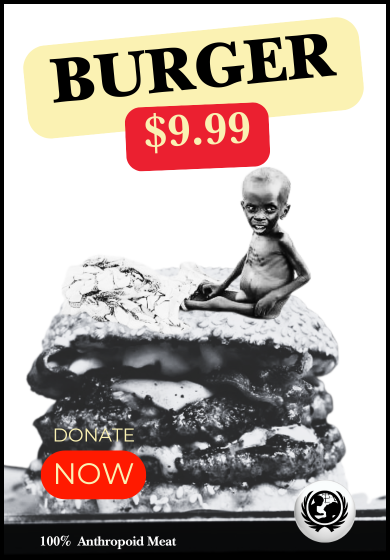The Birth of the Heroin Addict
In the mid to late 1800’s, opium was a fairly popular drug. Opium dens were scattered throughout what we know today as the wild west. The opium influx during this period was due in large part to the drug being brought into the country via Chinese immigrants who came here to work on the railroads.

Accurate American history tells us that famous names of the period like Wild Bill Hickock and Kit Carson actually frequented opium dens more often than saloons. The stereotyped picture we have of the cowhand bellying up to the bar drinking whiskey straight after a long hard ride on the dusty trail is only part of the story of the old west. Oftentimes the cowhand was not belly up to a bar at all. He was in a prone position in a dim candle-lit room smoking opium in the company of an oriental prostitute. It was not uncommon for some of these cowhands to spend several days and nights at a time in these dens in a constant dream-state, eventually becoming physically addicted to the drug.
Nonetheless, it was true that alcoholism was a bigger problem. Alcoholism was one of the major sources of violence and death during this period. Eventually, however, opium was promoted as a cure for alcoholism by the late 1800’s.
It was from opium that morphine, a derivative, was developed as a painkiller in approximately 1810. It was considered a wonder drug because it eliminated severe pain associated with medical operations or traumatic injuries. It left the user in a completely numb euphoric dream-state. Because of the intense euphoric side effects, the drug in 1811 was named after the Greek god of dreams, Morpheus, by Dr. F.W.A. Serturner, a German pharmacist. By the mid-1850’s, morphine was available in the United States and became more and more popular with the medical profession. The benefits of using the drug to treat severe pain was considered nothing short of remarkable to doctors of the time. Unfortunately, the addictive properties of the drug, on the flip side, went virtually unnoticed until after the Civil War.

During the Civil War the numbers of people exposed to morphine in the course of being treated for their war-related injuries sky-rocketed. Tens of thousands of Northern and Confederate soldiers became morphine addicts.
In just over 10 years time from its arrival into this country, the United States was plagued with a major morphine epidemic. Even though no actual statistics were kept on addiction at this time, the problem had grown to large enough proportions to raise serious concerns from the medical profession. Doctors became perplexed and were completely in the dark as to how to treat this new epidemic.
By 1874 the answer to this increasing problem was thought to be found in the invention of a new drug in Germany. This new wonder drug was called Heroin, after its German trademarked name. Heroin was imported into the United States shortly after it was invented. The sales pitch that created an instant market of American doctors and their morphine-addicted patients was that heroin was a “safe, non-addictive” substitute for morphine.
Hence, the heroin addict was born and has been present in American culture ever since.

From the late 1800’s to the early 1900’s the reputable drug companies of the day began manufacturing over-the-counter drug kits. These kits contained a glass barreled hypodermic needle and vials of opiates (morphine or heroin) and/or cocaine packaged neatly in attractive engraved tin cases. Laudanum (opium in an alcohol base) was also a very popular elixir that was used to treat a variety of ills. Laudanum was administered to kids and adults alike – as freely as aspirin is used today.
There were of course marketing and advertising campaigns launched by the drug companies producing this product that touted these narcotics as the cure for all types of physical and mental ailments ranging from alcohol withdrawal to cancer, depression, sluggishness, coughs, colds, tuberculosis and even old age. Most of the elixirs pitched by the old “snake oil salesmen” in their medicine shows contained one or more of these narcotics in their mix.
Heroin, morphine and other opiate derivatives were unregulated and sold legally in the United States until 1920 when Congress recognized the danger of these drugs and enacted the Dangerous Drug Act. This new law made over-the-counter purchase of these drugs illegal and deemed that their distribution be federally regulated. By the time this law was passed, however, it was already too late. A market for heroin in the U.S. had been created. By 1925 there were an estimated 200,000 heroin addicts in the country. It was a market which would persist to this day.
Related article: Heroin Today
How is Heroin Made?

People are curious and ask, “How is heroin made?” when they see the drug affecting them or those around them. “Heroin,” though, is actually a brand name for diacetylmorphine. The drug company Bayer synthesized diacetylmorphine in 1895 and branded it “Heroin.” Heroin made a claim to be a non-addictive replacement for morphine. Now, however, heroin is the common name for the drug diacetylmorphine and it’s clear the claims Bayer made about heroin being non-addictive were false. (See History of Heroin)
How is Heroin Made? – Where Does Heroin Come From?
Heroin is an opiate, stemming from the term opium, indicating heroin is made from the opium poppy. However, heroin is a semi-synthetic opiate as heroin is made not directly from the poppy, but from morphine. Morphine comes from the opium poppy directly.
Opium and morphine, from which heroin is made, come from a variety of sources:1
- Afghanistan -leading illegal opium and heroin exporter producing up to 82% of the world’s supply
- Pakistan, Southeast Asia, South America – other illegal sources
- Tasmania, Australia, France, Japan, the United Kingdom – sources of legal opium and heroin
How is Heroin Made? – What is Heroin Made Of?
Heroin is made by first growing the opium poppy. Once the poppy is ripening, its pod is scored allowing a white, milky, latex to come out.2 This latex dries into a sticky, jelly-like resin. Typically this raw opium is made into morphine close to the source as morphine pressed into bricks and dried in the sun is much easier to handle and smuggle.
It is from morphine that heroin is made. Morphine is made into heroin with a chemical reaction containing the chemical compound acetic anhydride. The heroin is then purified using chemical or mechanical means.
How is Heroin Made? – What is Synthetic Heroin?
As heroin is made from opium which is made from the actual opium poppy, heroin is known as a semi-synthetic opiate. Synthetic heroin is not really heroin at all; synthetic heroin is actually one of several synthetic opiates. Synthetic opiates are called such because they are completely man-made and contain no opium. Synthetic opiates are often called synthetic heroin due to the similarity of their effects.
Synthetic opiates that are sometimes called synthetic heroin include:
- Fentanyl
- Methadone
- Tramadol
- Pethidine
Information on Street Names for Heroin
In Afghanistan, opium is now essential for the Taliban regime
The production and export of opium and, to a lesser extent, heroin are the main source of income for the Taliban regime, despite the condemnation of drug trafficking by their religious leader.
Subscribers only

One year after the American debacle in Kabul, the “new” Taliban, now in full control, have left no illusions about the continued strictness of their ideology and the resulting moral order imposed through daily repression. While they have consistently presented themselves as committed to the international fight against terrorism due to the deadly conflict between them and the local branch of the Islamic State (IS), they have also maintained solid relations with al-Qaeda, whose leader, Ayman al-Zawahiri, was recently killed in the middle of Kabul in an American strike on his residence.
However, there is one crucial issue on which these “new” Taliban have broken with the practice of their predecessors, who controlled Kabul and the vast majority of Afghan territory from 1996 to 2001: the cultivation of poppies, which Mullah Omar had successfully banned in July 2000.
Devastating the movement’s farmer base
The poppy is planted in the autumn so that the juice from the plant, from which opium is extracted, can be harvested in spring. The fatwa (order) issued in 2001 by the “commander of the believers,” as Mullah Omar proclaimed himself, had an immediate impact on the whole of Taliban territory, leading to a collapse in opium production in 2001, and thus a drying up of the world’s heroin flows, of which Afghanistan was already the main source.

The harshness of that prohibition weakened the rural base of the Taliban regime, which was unable to withstand more than a few weeks of the US-led offensive in October 2001. During their patient two-decade reconquest of power, the “new” Taliban have learned the lesson of such a devastating prohibition for the farmer base of their movement. In the regions that gradually came under their control, they have organized the taxation of poppy cultivation and opiate trafficking, without taking charge of the narcotics production chain themselves.
The most prominent drug barons nevertheless continued to collaborate with the authorities in Kabul, which was then under the protectorate of the United States. As early as 2006, the UN expressed concern that Afghanistan was moving from a narco-economy to a narco-state. The historical record of 8,200 tons of opium produced in 2007 was beaten in 2017 with 9,000 tons, mostly from government zones. Moreover, in the summer of 2021, it was the Taliban’s assault on the provinces richest in opium that precipitated the fall of the Afghan capital. For the new masters of Kabul, to deprive themselves of the narcotics goldmine was no longer a possibility, especially given that international sanctions and a severe drought had already plunged the countryside into lasting depression. According to the UN, the area under poppy cultivation for the 2020-2021 season was around 177,000 hectares, which was expected to yield an estimated opium production in 2021 of 6,800 tons, up 8% from 2020. Also according to the UN, income from Afghan opiates amounted to between 1.8 and 2.7 billion dollars in 2021, or 6% to 11% of Afghan GDP.
Inside Afghanistan’s booming opium trade | 60 Minutes Australia
Afghanistan’s booming opium trade | 60 Minutes Australia
1Afghanistan
This Is The Main Source Of The World-Famous South Asian Opium, And Is Also Where The Balkan Route Begins; Where 90% Of The World’s Product, $4 Billion Worth Annually, Originates, And Where Production Itself Has Been Rising Unstoppably Over The Last Decade.
Afghan heroin pours out of the country through every shared-border: West through Iran, or southwest detouring through Pakistan en route to Europe and North America; and north through Tajikistan, Uzbekistan and Turkmenistan, bound for Russia and her two-and-a-half million addicts.
The economy of Afghanistan, opium capital of the world, depends on the stuff unequivocally. Farmers collect about a fourth of the yearly revenue – paying the remainder in taxes to district officials, fees to warlords and insurgents, and profits to global traffickers. With the raw material accounting for over 35% of the country’s legal GDP, and 10% of the population employed by the poppy industry, heroin isn’t just prolific in Afghanistan— it’s a way of life.



